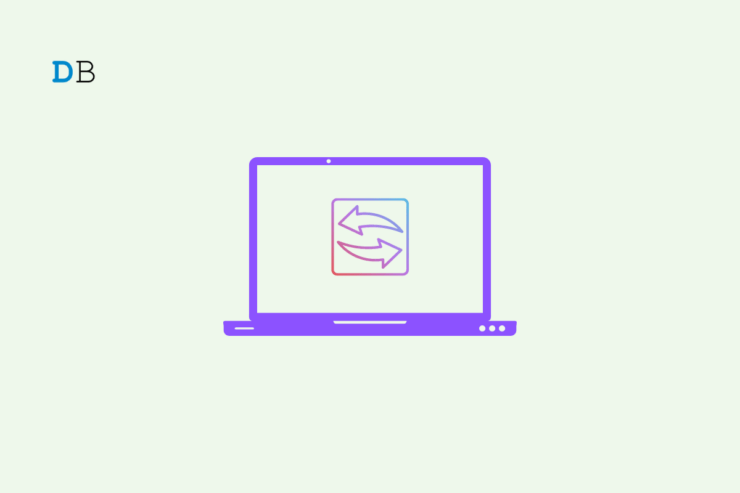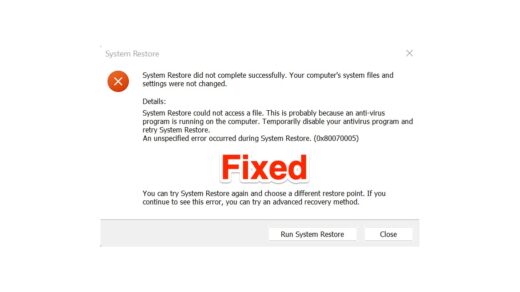Are you experiencing slow file transfer speed on Windows 11? I know how frustrating can it get when you are trying to transfer some files and so much time is wasted due to slow speed. In this guide, I have explained the common reasons that cause slow file transfer speed. Also, I have included some troubleshooting tips to fix the issue.
The primary reasons can be corrupt system files or the presence of malware on your PC. These two aspects can pretty much slow down everything on the PC. While transferring large files, if the network bandwidth usage exceeds a certain limit, Microsoft will cap the limit. This is done to reserve bandwidth for system usage.
Often corrupt USB drivers and having the Remote Desktop Connection enabled on the system can cause slow file transfer speeds. Using the FAT32 file format also slows down the file transfer speed in Windows 11. If you have a PC with lightweight specs, then having the file indexing enabled can cause a slowdown of file transfer speed.
Best Ways to Fix Slow File Transfer Speed on Windows 11
Let us start fixing the slow file transfer speed issue.
1. Restart the PC
Often you may be facing a slow file transfer speed randomly on your PC. I would suggest restarting your PC. I have often used this trick and fixed the slow file transfer speed easily.
- Press the Windows key.
- Click on the power off icon to trigger a menu.
- Then click on Restart.
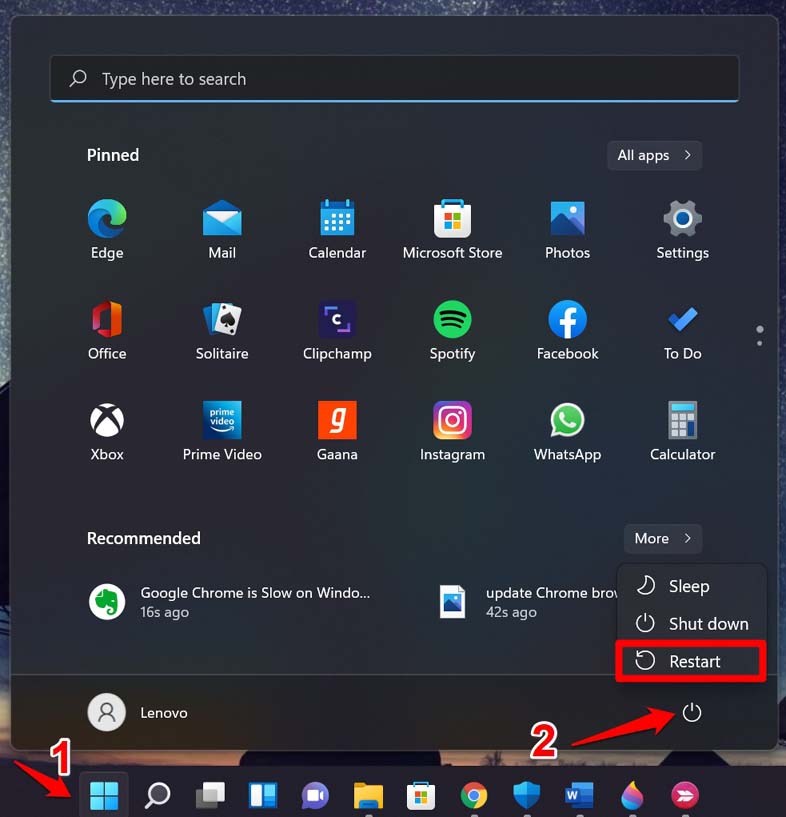
Resume transferring the file after the PC reboots.
2. Run an SFC Scan
Due to interruption during a system update installation or while installing a new app, one or more system files may have become corrupt. You can deploy the SFC scan through the command prompt to find such corrupt system files and fix them.
- Launch the command prompt with Administrator permission.
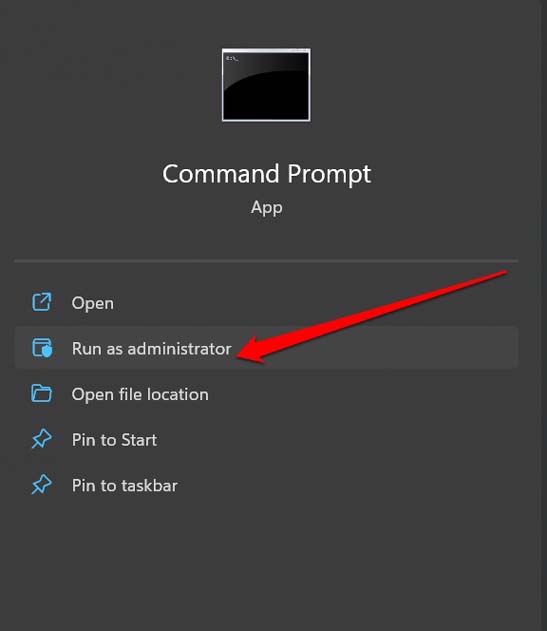
- Enter the command below.
sfc scannow
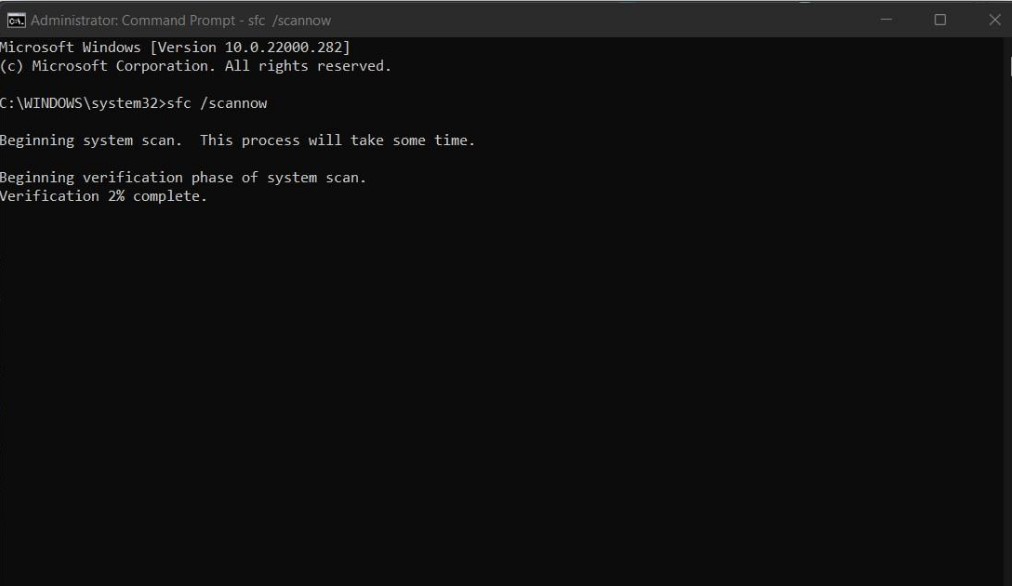
- Press enter
This process may take some time to finish. Make sure that you are not interrupting the process in between.
3. Update the USB Drivers
There are various types of file transfers we carry out. One of that is transferring files between an external USB drive to our PC or vice versa. If the USB drives are corrupted or not updated to their latest version, then technical issues are going to arise. To fix that, you have to manually update the USB driver on Windows 11.
- Open the Device Manager.

- Navigate to Universal Serial Bus Controllers.
- Right-click on the USB driver and select Update Driver.
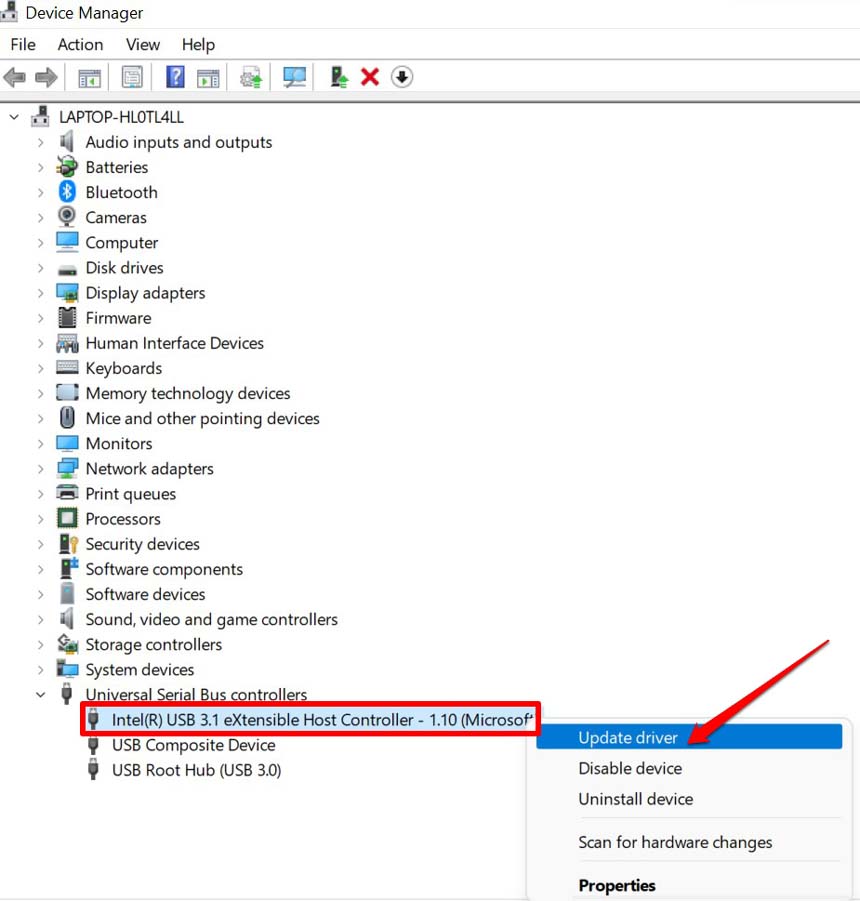
- Then click on Search Automatically for drivers and let Windows find the latest available version of the driver and install it on your PC.
4. Check for Malware
Your PC may have malware on it. Usually, the Windows Defender can discover a virus easily. Still, to be sure, you can manually check for malware. Here is how to do it.
- Press the Windows + S hotkeys to bring up the search console.
- Type in Virus and Threat Protection.
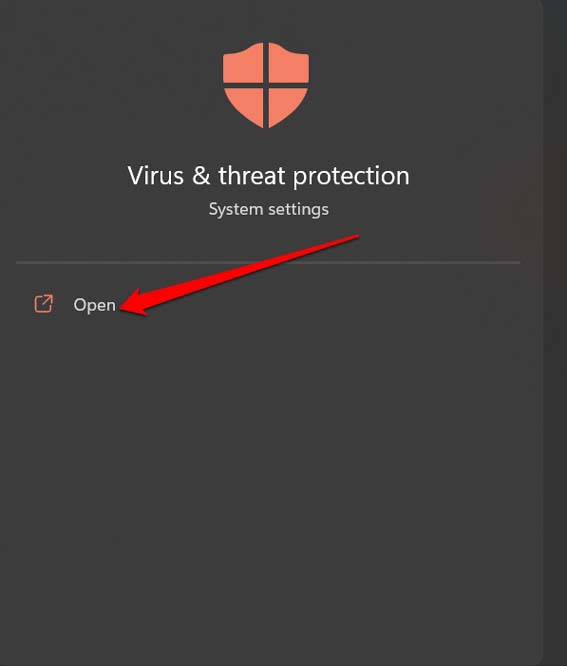
- Now, click on Scan Options.
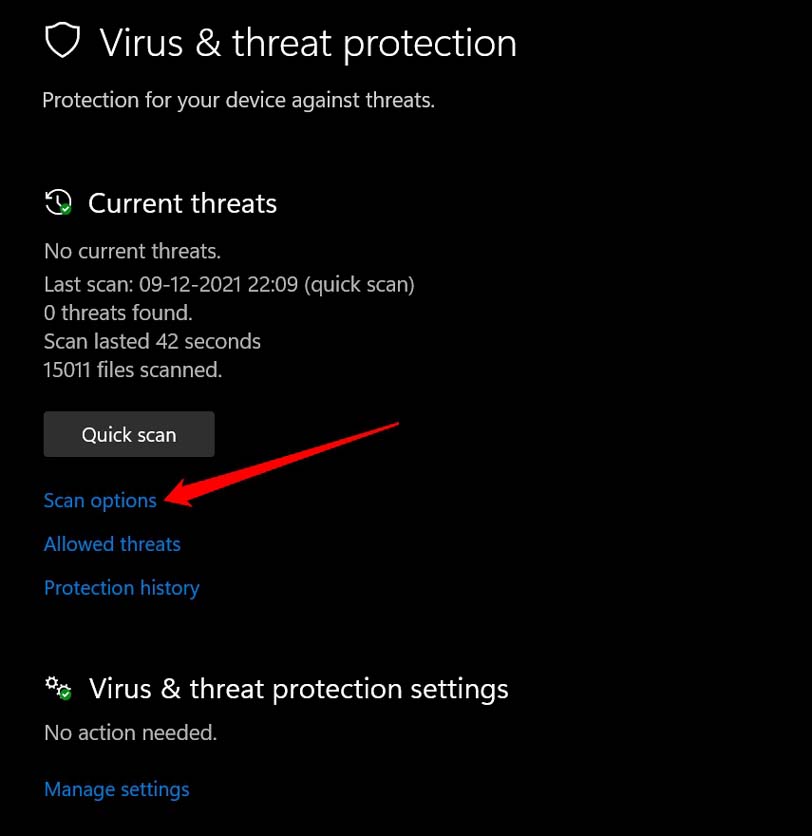
- Select Full Scan and click on Scan Now to begin the virus scanning.

If any malware is detected, remove it by following the instructions provided by Windows Defender.
5. Close the Unused Apps
Normally, the slow file transfer speed issue happens when you have several apps active in the foreground and the background. At that point, when you try to perform a file transfer, the speed becomes lower as the system resources are busy attending to other applications that are running.
My suggestion is to close those apps that you do not require at that moment. Let the file transfer complete and then you can open these apps again. To close any apps, you can use Task Manager.
- Press Ctrl +Shift +Esc to open the Task Manager.
- Under the Processes tab, select the app you want to close.
- Right-click on the app and select End Task.
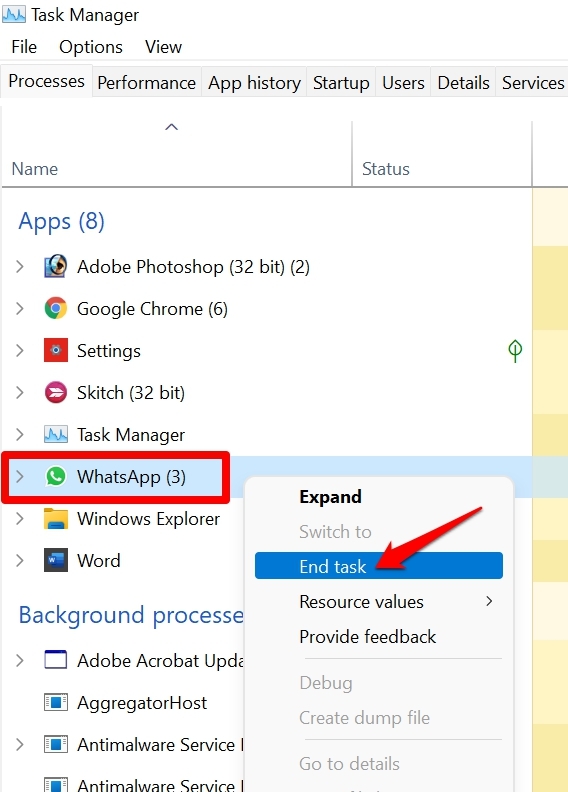
6. Disable Remote Desktop Connection
This troubleshooting is ideal if you are accessing a computer that is part of a network of other PCs. It means you are trying to transfer files between two PCs within one network, and you are facing slow transfer speeds. Here are the steps to disable the RDC.
- Open the Control Panel.
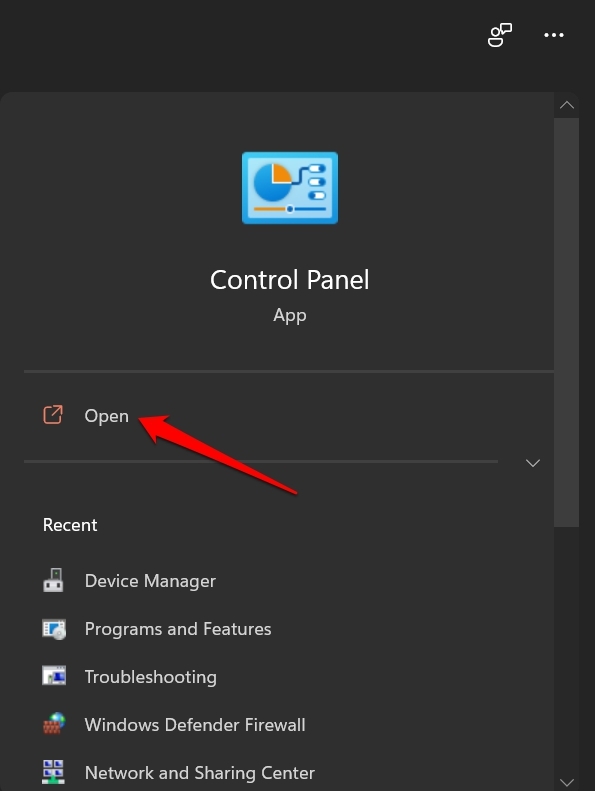
- Click on Programs & Features.
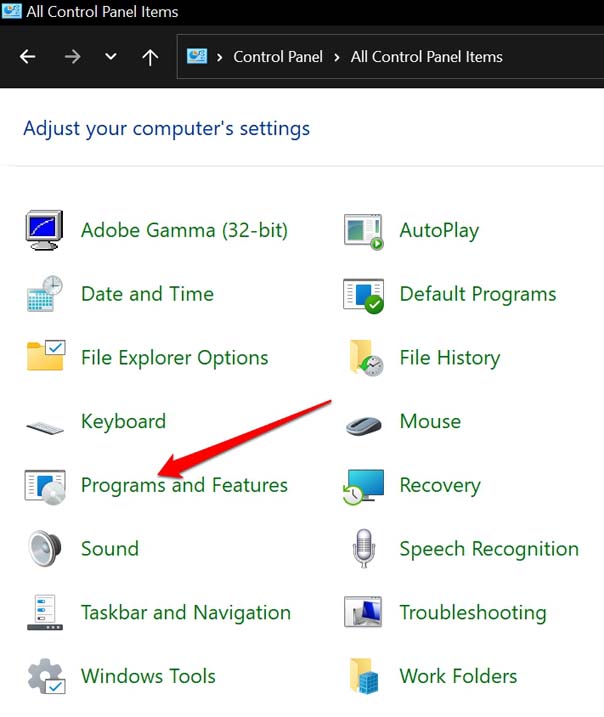
- On the next page, at the left-hand panel, click on Turn Windows Feature On or Off.
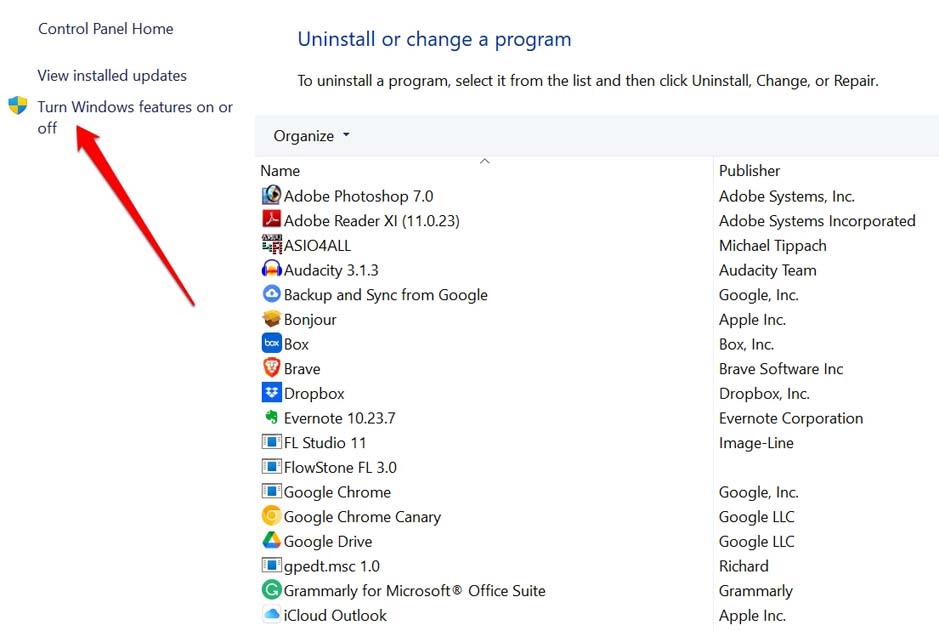
- In the Windows Features dialog box, scroll to Remote Differential Compression API Support and uncheck it.
- Click on OK to save the changes.

- Restart the PC and continue to transfer the files.
7. Convert File Format to NTFS
FAT32 is known for its slow file transfer speed. To compensate for that, you can change the file format system, to that of NTFS. You can make the changes through the command prompt. Before going for this fix, take a backup of your drive whose file format you are about to change.
When you change the file format, all the present data will be formatted and removed permanently. Hence, having a backup will be ideal to retrieve your data smoothly.
- Open Command Prompt with Administrator permission.

- Type the following command.
convert DRIVE NAME:/fs:ntfs
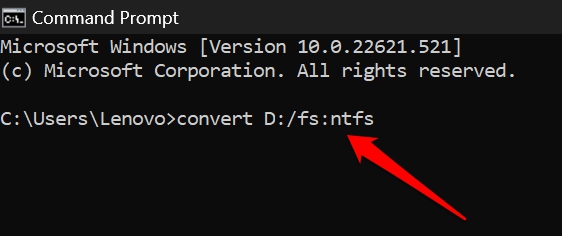
- Keep in mind that you have to replace the phrase DRIVE NAME with the actual name of the drive. It could be D: F: or anything similar.
- You will see a file format conversion successful message. Then restart your PC and resume transferring the files.
8. Disable File Indexing on the PC
Only go for this troubleshooting method if you are using a low-end computer. There is a downside to this fix. Once you disable the indexing, finding a file using the classic Windows search will be difficult. So, proceed with the troubleshooting at your discretion. Here are the steps in case you want to disable the file indexing.
- Open the Control Panel using Windows + S.

- Click on Indexing Options.

- Select the folder which has the maximum user data. You may select all folders as well.
- Click on Modify > click on Pause. This will stop the indexing.
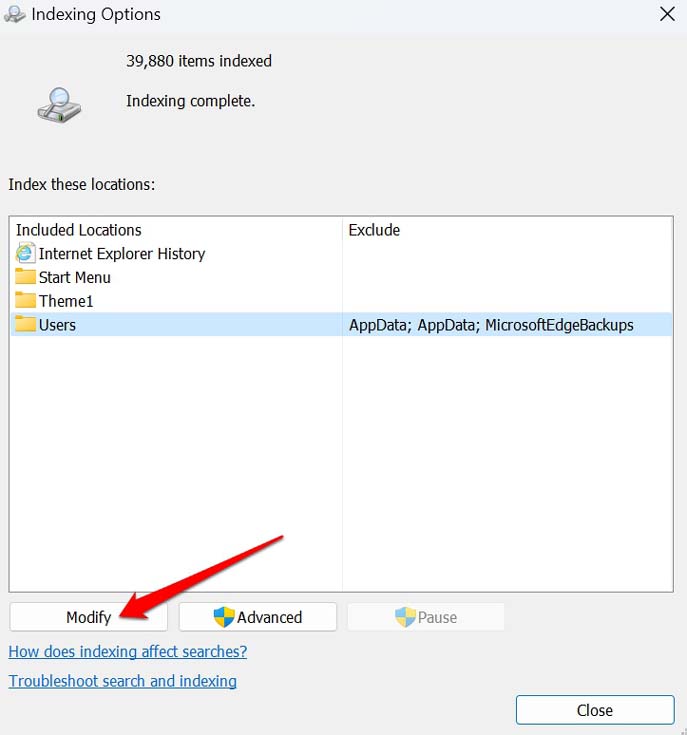
- Restart the computer to save the changes.
9. Do a Clean Boot
When you perform a clean boot, no third-party apps or startup items will run. Hence, this will boost computer efficiency which will allow you to transfer your files quite fast. Only Microsoft’s native apps will continue to run after a clean boot. Here are the steps to do a clean boot.
- Press Windows + R to bring up the Run command box.
- Enter the command msconfig and press enter.
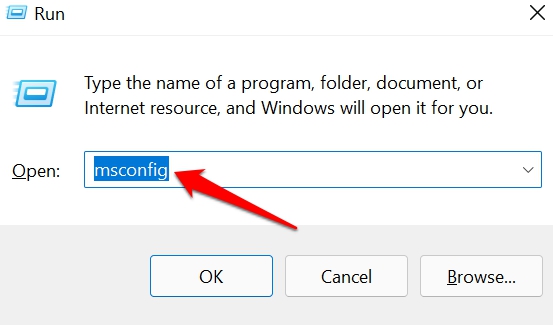
- Click the Services tab.
- Navigate to Hide All Microsoft Services and click on the check box.
- Also, click on Disable All.

- Click on Startup > Click on Open Task Manager.
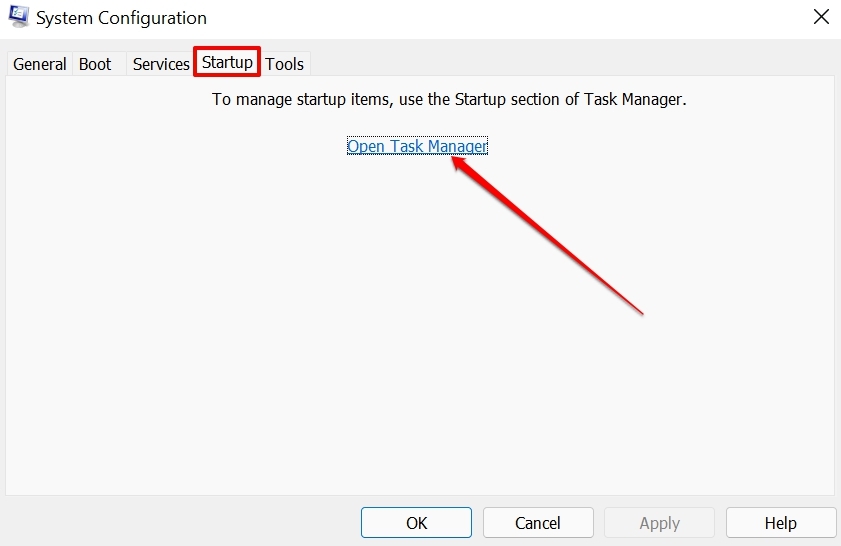
- You will be redirected to the list of non-Microsoft apps installed on your PC.
- Right-click on any third-party app and click Disable in the pop-up menu.
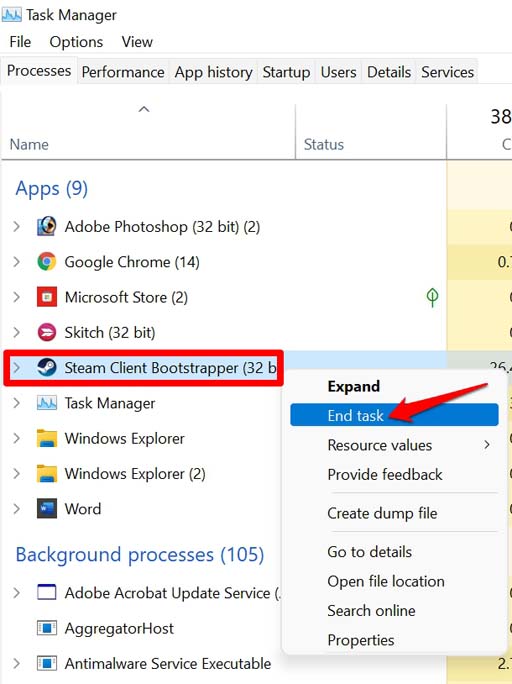
- You can repeat the above steps for other third-party apps that you wish to close.
- Once you finish the clean boot, restart your computer.
Conclusion
This wraps up this guide to Fix Slow File Transfer Speed on Windows 11. Boost up the file transfer speed, save your time and add to your productivity. I hope this guide was informative.
If you've any thoughts on How to Fix Slow File Transfer Speed on Windows 11?, then feel free to drop in below comment box. Also, please subscribe to our DigitBin YouTube channel for videos tutorials. Cheers!
